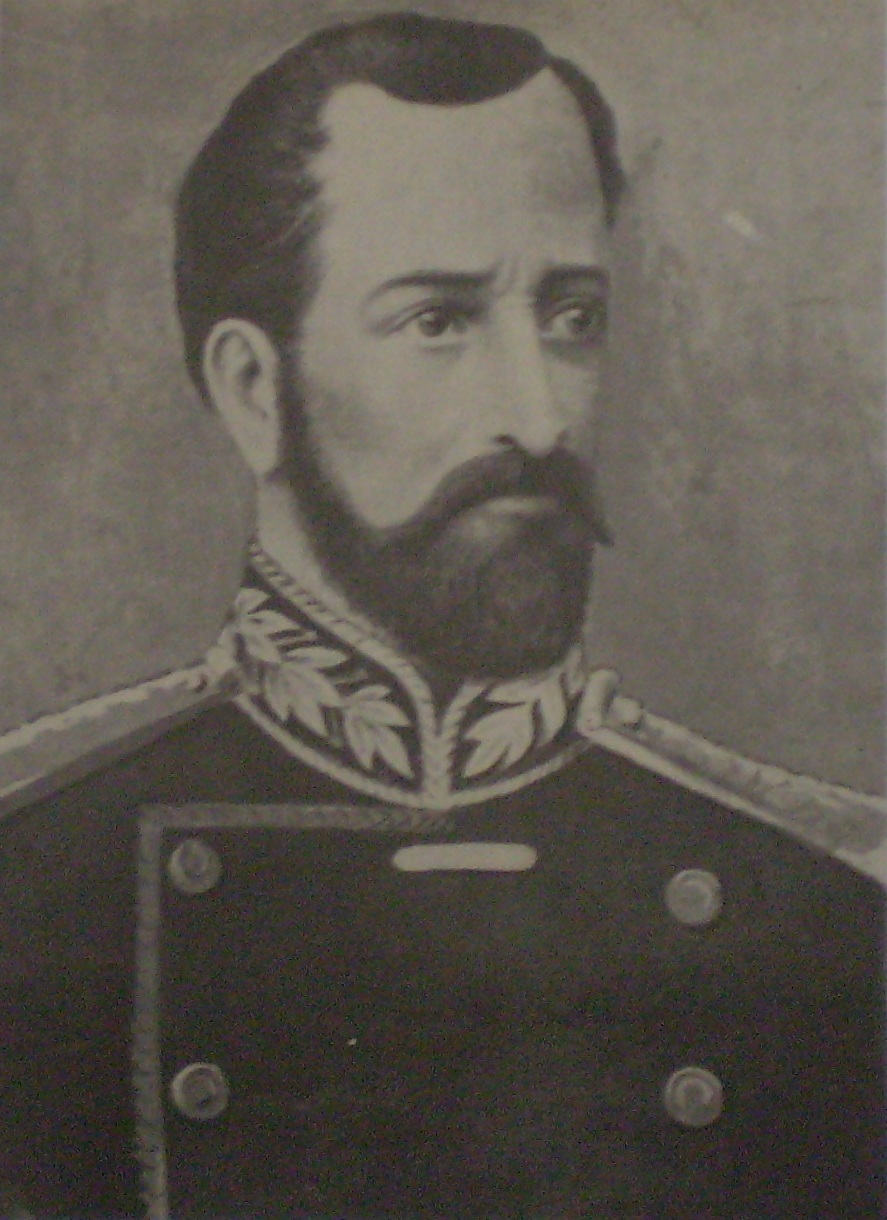|
Televisión Universitaria UAGRM
Televisión Universitaria, also known as TVU, is a Bolivian over-the-air television station, launched on March 1, 1973, by the Gabriel René Moreno Autonomous University. It broadcasts on VHF channel 11, as part of the Red Universitaria Boliviana de Información (Red Rubi) in the city of Santa Cruz de la Sierra. History TVU was the first channel to go on air in Santa Cruz de la Sierra, as up until then, television was limited to La Paz and surrounding areas, by means of Televisión Boliviana, the state channel. The channel started experimental broadcasts on March 1, 1973, using a homemade transmitter with a 5-watt radius broadcasting on channel 8. The channel broadcast three days a week, its first director was Noel Alderete Arteaga and Alfredo Quiroz the first technician. In 1978, it started color broadcasting and moved to channel 11, its current frequency. It had also started color broadcasts before TVB finished its conversion.''Notivisión'', November 21, 2020 In 1986 it acquir ... [...More Info...] [...Related Items...] OR: [Wikipedia] [Google] [Baidu] |
Gabriel René Moreno Autonomous University
The Gabriel René Moreno Autonomous University (Spanish: ''Universidad Autónoma Gabriel René Moreno'') is a university in Santa Cruz de la Sierra, Bolivia. It was created by supreme decree of December 15, 1879. The first rector was Bishop Juan Jose Valdivia, and the first university careers offered were Medicine, Theology, and Law Law is a set of rules that are created and are enforceable by social or governmental institutions to regulate behavior, with its precise definition a matter of longstanding debate. It has been variously described as a science and as the ar .... The university is named after thinker, historian, and literary figure Gabriel René Moreno, called the "Prince of the Letters". The university is the fifth-best university in Bolivia, as of 2023, and is first in academic quality in the department of Santa Cruz. Faculties The university currently has 18 faculties, 6 of which are located off the main urban campus. Main Campus * Faculty of Legal, Po ... [...More Info...] [...Related Items...] OR: [Wikipedia] [Google] [Baidu] |
Bolivia
Bolivia, officially the Plurinational State of Bolivia, is a landlocked country located in central South America. The country features diverse geography, including vast Amazonian plains, tropical lowlands, mountains, the Gran Chaco Province, warm valleys, high-altitude Andean plateaus, and snow-capped peaks, encompassing a wide range of climates and biomes across its regions and cities. It includes part of the Pantanal, the largest tropical wetland in the world, along its eastern border. It is bordered by Brazil to the Bolivia-Brazil border, north and east, Paraguay to the southeast, Argentina to the Argentina-Bolivia border, south, Chile to the Bolivia–Chile border, southwest, and Peru to the west. The seat of government is La Paz, which contains the executive, legislative, and electoral branches of government, while the constitutional capital is Sucre, the seat of the judiciary. The largest city and principal industrial center is Santa Cruz de la Sierra, located on the Geog ... [...More Info...] [...Related Items...] OR: [Wikipedia] [Google] [Baidu] |
Santa Cruz De La Sierra
Santa Cruz de la Sierra (; ), commonly known as Santa Cruz, is the largest city in Bolivia and the capital of the Santa Cruz Department (Bolivia), Santa Cruz department. Situated on the Pirai River (Bolivia), Pirai River in the eastern Tropical Lowlands of Bolivia, the Santa Cruz de la Sierra Metropolitan Region is the most populous urban agglomeration in Bolivia with an estimated population of 2.4 million in 2020. It is formed out of a conurbation of seven Santa Cruz municipalities: Santa Cruz de la Sierra, La Guardia, Bolivia, La Guardia, Warnes, Bolivia, Warnes, Cotoca, El Torno, Santa Cruz, El Torno, Porongo, and Montero, Bolivia, Montero. The city was first founded in 1561 by Spanish explorer Ñuflo de Chavez about east of its current location, and was moved several times until it was finally established on the Piray River, Pirai River in the late 16th century. For much of its history, Santa Cruz was mostly a small outpost town, and even after Bolivia gained its independenc ... [...More Info...] [...Related Items...] OR: [Wikipedia] [Google] [Baidu] |
Red Universitaria Boliviana De Información
Red Universitaria Boliviana de Información (Bolivian University Information Network), also known as Red RUBI, is a loose network of Bolivian television stations owned by universities. Unlike other networks, it doesn't provide a single national signal, instead depending on each of its nine members, located in departmental capitals, generating local programming. Stations are financed by their respective universities and primarily deliver local interest programming and little educational content. The idea of a network for the university channels originated from Oruro, having consolidated the goal, but without obtaining the adequate technological conditions. The Pando, Sucre and La Paz stations are available nationwide using the Bolivian TKSAT-1 satellite. The Pando and Sucre stations are uplinked by the Bolivian Space Agency and the La Paz station is uplinked by Entel The Empresa Nacional de Telecomunicaciones (''National Telecommunications Enterprise'', mostly known for its acronym ... [...More Info...] [...Related Items...] OR: [Wikipedia] [Google] [Baidu] |
Digital Terrestrial Television
Digital terrestrial television (DTTV, DTT, or DTTB) is a technology for terrestrial television, in which television stations broadcast television content in a digital signal, digital format. Digital terrestrial television is a major technological advancement over analog television, and has largely replaced analog television broadcasting, which was previously in common use since the middle of the 20th century. Test broadcasts began in 1998, and the Digital television transition, changeover to digital television began in 2006 and is now complete in many countries. The advantages of digital terrestrial television are similar to those obtained by digitizing platforms such as cable TV, satellite, and telecommunications: more efficient use of radio spectrum bandwidth, the ability to broadcast more channels than analog, better quality images, and potentially lower operating costs for broadcasters. Different Country, countries have adopted different digital broadcasting standards. Some ... [...More Info...] [...Related Items...] OR: [Wikipedia] [Google] [Baidu] |
TVU UAGRM 1973 (IATA airport ...
TVU may refer to: Entertainment and media * RadioU TV, formerly known as TVU, an American Christian rock music channel * TVU (Chile), Chilean educational channel * TVUnetworks, a company that manufactures live mobile television broadcasting equipment * The Velvet Underground, was an American rock band * The Veer Union, a Canadian rock band * TV-U Fukushima, a television station (channel 26 digital) licensed to Fukushima, Fukushima Prefecture, Japan * TV-U Yamagata, a television station (channel 20 digital) licensed to Yamagata, Yamagata Prefecture, Japan Universities * Technical and Vocational University, a public university in Iran * Thames Valley University, a university in England Other * Matei Airport Matei Airport , also known as Taveuni Airport or Taveuni Island Airport, is an airport located in Matei on the northern end of Taveuni, an island of the Vanua Levu Group in Fiji. It is operated by Airports Fiji Limited. The airport is quite sma ... [...More Info...] [...Related Items...] OR: [Wikipedia] [Google] [Baidu] |
La Paz
La Paz, officially Nuestra Señora de La Paz (Aymara language, Aymara: Chuqi Yapu ), is the seat of government of the Bolivia, Plurinational State of Bolivia. With 755,732 residents as of 2024, La Paz is the List of Bolivian cities by population, third-most populous city in Bolivia. Its metropolitan area, which is formed by La Paz, El Alto, Achocalla Municipality, Achocalla, Viacha Municipality, Viacha, and Mecapaca Municipality, Mecapaca makes up the second most populous urban area in Bolivia, with a population of 2.2 million, after Santa Cruz de la Sierra with a population of 2.3 million. It is also the capital of the La Paz Department, Bolivia, La Paz Department. The city, in west-central Bolivia southeast of Lake Titicaca, is set in a canyon created by the Choqueyapu River. It is in a bowl-like depression, part of the Amazon basin, surrounded by the high mountains of the Altiplano. Overlooking the city is the triple-peaked Illimani. Its peaks are always snow-cove ... [...More Info...] [...Related Items...] OR: [Wikipedia] [Google] [Baidu] |
Bolivia TV
Televisión Boliviana (Bolivia TV) is the first television station of Bolivia and serves the only means of television communication from the government. The channel was established in August 1969 under the government of Luis Adolfo Siles after years of planning by the government of then-recently deceased René Barrientos."Época Republicana (1900–2000)" – Gobierno de Bolivia (Retrieved on September 27, 2008) It is a state-owned broadcasting network. Created to replace the previous public station Televisión Boliviana or TVB, it was the audience leader as it was the only legal television station in the country until 1984, when private television stations were legalized in Bolivian territory. The station claims to be plural and the only media outlet reaches out to the whole po ... [...More Info...] [...Related Items...] OR: [Wikipedia] [Google] [Baidu] |
Philadelphia (film)
''Philadelphia'' is a 1993 American legal drama film directed and produced by Jonathan Demme, written by Ron Nyswaner, and starring Tom Hanks and Denzel Washington. Filmed on location in its namesake city, it tells the story of attorney Andrew Beckett (Hanks) who comes to ask a personal injury attorney, Joe Miller (Washington), to help him sue his former law firm, who fired him after discovering he was gay and that he had AIDS. The cast also features Jason Robards, Mary Steenburgen, Antonio Banderas, and Joanne Woodward. ''Philadelphia'' is one of the first mainstream Hollywood films not only to explicitly address HIV/AIDS and homophobia, but also to portray gay people in a positive light. It premiered in Los Angeles on December 14, 1993 in a benefit for the AIDS Project, and opened in limited release on December 22, before expanding into wide release on January 14, 1994. It grossed $206.7 million worldwide, becoming the 9th highest-grossing film of 1993. The film w ... [...More Info...] [...Related Items...] OR: [Wikipedia] [Google] [Baidu] |
Jurassic Park (film)
''Jurassic Park'' is a 1993 American science fiction action film directed by Steven Spielberg and written by Michael Crichton and David Koepp, based on the former's Jurassic Park (novel), 1990 novel of the same name. Starring Sam Neill, Laura Dern, Jeff Goldblum, and Richard Attenborough, the film is set on the fictional island of Isla Nublar near Costa Rica, where wealthy businessman John Hammond (Jurassic Park), John Hammond (Attenborough), a mathematician, and a team of genetic scientists have created a Animal theme park, wildlife park of De-extinction, de-extinct dinosaurs. When industrial sabotage leads to a catastrophic shutdown of the park's power facilities and security precautions, a small group of visitors struggle to survive and escape the now perilous island. Before Crichton's novel was published, four studios put in bids for its film rights. With the backing of Universal Pictures, Spielberg acquired the rights for $1.5 million. Crichton was hired for an additi ... [...More Info...] [...Related Items...] OR: [Wikipedia] [Google] [Baidu] |
Evo Morales
Juan Evo Morales Ayma (; born 26 October 1959) is a Bolivian politician, trade union organizer, and former cocalero activist who served as the 65th president of Bolivia from 2006 to 2019. Widely regarded as the country's first president to come from its indigenous population, his administration worked towards the implementation of left-wing policies, focusing on the legal protections and socioeconomic conditions of Bolivia's previously marginalized indigenous population and combating the political influence of the United States and resource-extracting multinational corporations. Ideologically a socialist, he led the Movement for Socialism (MAS) party from 1998 to 2024. Born to an Aymara family of subsistence farmers in Isallawi, Orinoca Canton, Morales undertook a basic education and mandatory military service before moving to the Chapare Province in 1978. Growing coca and becoming a trade unionist, he rose to prominence in the '' campesino'' ("rural laborers") union. I ... [...More Info...] [...Related Items...] OR: [Wikipedia] [Google] [Baidu] |





